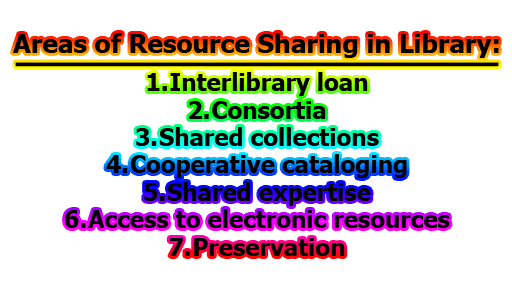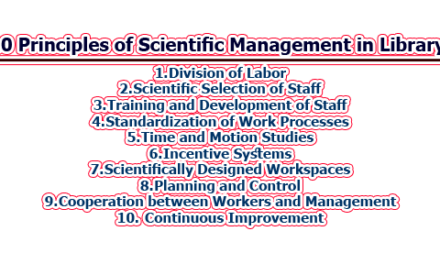Areas of Resource Sharing in Library:
Resource sharing is an important aspect of library services that enable libraries to provide access to a wider range of materials and resources for their patrons. It involves collaboration among libraries to share their collections, expertise, and services, and to provide access to resources that would otherwise be unavailable or too expensive to acquire. Here are some of the key areas of resource sharing in library:
- Interlibrary loan: Interlibrary loan (ILL) is a service that allows libraries to borrow materials from other libraries on behalf of their patrons. ILL enables libraries to provide access to materials that are not available in their own collections, including rare or out-of-print materials, and materials in languages or formats that the library does not typically collect.
- Consortia: Consortia are groups of libraries that work together to share resources and services. Consortia can take various forms, such as regional, statewide, or national networks, and can involve different types of libraries, such as academic, public, or special libraries. Consortia can provide a range of services, such as shared cataloging, cooperative purchasing, and access to electronic resources.
- Shared collections: Shared collections are collections that are owned and shared by multiple libraries. Shared collections can take various forms, such as shared storage facilities, joint purchases of materials, and cooperative digitization projects. Shared collections enable libraries to expand their collections without having to acquire and maintain their own copies of the materials.
- Cooperative cataloging: Cooperative cataloging is a process in which multiple libraries collaborate to create bibliographic records for the same resources. Cooperative cataloging can help to reduce duplication of effort and improve the quality and consistency of bibliographic records. Cooperative cataloging initiatives include programs such as the Program for Cooperative Cataloging (PCC) and the National Program for Cataloging and Metadata.
- Shared expertise: Libraries can also share their expertise and knowledge with other libraries. This can include sharing best practices for collection development, cataloging, and preservation, as well as providing training and professional development opportunities for library staff.
- Access to electronic resources: Electronic resources, such as e-books, e-journals, and databases, can be expensive and difficult for individual libraries to acquire and maintain. Many libraries are therefore turning to consortia and other forms of resource sharing to provide access to electronic resources for their patrons. Consortia can negotiate discounted pricing and licensing terms for electronic resources, making them more affordable and accessible to libraries.
- Preservation: Preservation of library materials is a critical concern for libraries, especially for rare and unique materials. Libraries can share resources and expertise for preservation, such as conservation treatments, storage facilities, and disaster planning.
In conclusion, resource sharing is an essential component of library services that enable libraries to expand their collections and provide access to a wider range of resources and services for their patrons. Libraries can work together in various ways to share resources, expertise, and services, including interlibrary loans, consortia, shared collections, cooperative cataloging, access to electronic resources, and preservation. These collaborative efforts help to reduce duplication of effort, improve access to resources, and make library services more efficient and effective.

Library Lecturer at Nurul Amin Degree College










